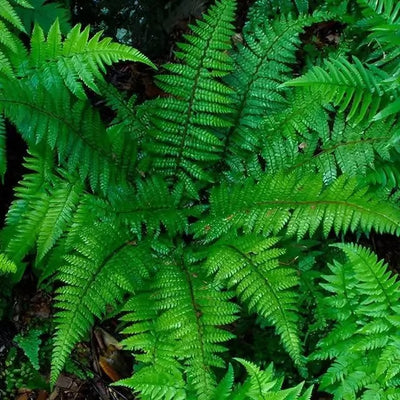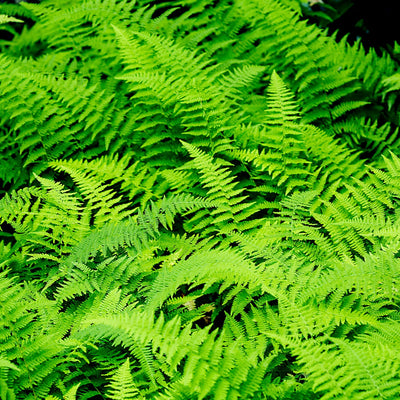Cinnamon Fern
Cinnamon Fern-Osmundastrum
The Cinnamon Fern is named for the brown color it acquires as it ages. A helpful plant, this Fern can aid in stopping soil erosion and is also deer-resistant. They thrive in zones 4-10 and require partial or filtered shade. Their minimal care requirements make them a popular indoor and outdoor plant. They grow 3-8 feet tall. They can grow 2-12 feet in width, and if allowed to grow unchecked, they cover ground rapidly. They grow widespread across North America and Asia in boggy soil. That means they need lots of water and organic matter to thrive. Besides the seasonal brown color, what distinguishes them from other ferns is that their fertile, brown fronds grow upright in the center of the plant, while the sterile, green fronds radiate out around them. It is after the fertile fronds lose their spores that the sterile fronds grow brown in autumn. The sterile fronds then die and can fall off after the frost. Gardeners should also trim any dead sterile fronds that remain so the plant can thrive again in the spring. There is no need to trim healthy fertile fronds, as they can survive the winter.
For first-time plantings, choose a time in spring after the last frost has passed. It would help if you planted the ferns 2-3 feet apart. They provide a beautiful contrast to plants such as the Iris. The Ferns set off the Iris flowers of blue, pink, orange, or red colors with flair during the spring and summer months and complement them with their brown color in the fall. Another eye-catching pairing for the Cinnamon Fern is Lobelia. These flowers also thrive in boggy soil, but their aesthetic value lies primarily in their red, white, blue, or pink flowers. With their widespread growth, hearty Cinnamon Ferns are a striking addition to any garden.


